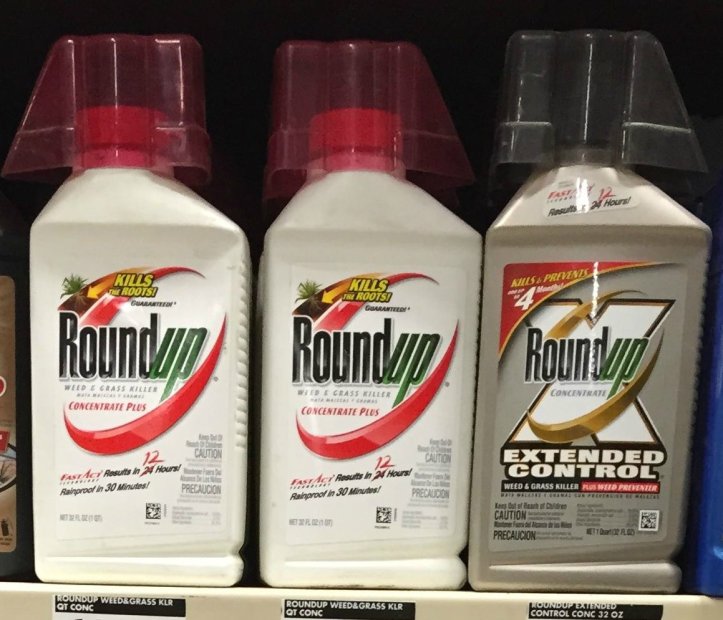Is it really such a stretch to think Monsanto could be covering up evidence concerning glyphosate? This is the company that lied for decades about PCBs, Agent Orange, Dioxin, DDT, Saccharin, as well as rBGH growth hormone in dairy and milk products. Their advertising and PR departments know no limits.
Anthony Samsel is an independent research scientist working internationally in the interest of public health and the environment. He is a member of the Union of Concerned Scientists, and a former scientist and consultant at Arthur D. Little, one of the world’s leading management consulting firms. Now retired, Samsel has devoted much of his independent research on Roundup’s toxicological characteristics and bioactivity. Unable to gain access to research reports and data Monsanto submitted to the EPA through FOIAs, he turned to his senator’s office, who assisted in the procurement of studies and reports he sought. Months later he received a hoard of scientific documents, over 15,000 pages worth, covering Monsanto’s complete glyphosate research.
With his co-investigator Dr. Stephanie Seneff at MIT the two have been reviewing Monsanto’s data. Their conclusion is Monsanto’s claims about glyphosate’s safety are patently false. The company has known for almost four decades that glyphosate is responsible for a large variety of cancers and organ failures. Clearly it was for this reason that Monsanto demanded the data and reports to be sealed and hidden from public scrutiny as proprietary trade secrets. Read full article

Keep Roundup away from your kids, your pets, your home, your yard, your neighborhood.
Glyphosate: 3 Actions that destroy health and is implicated in killing Bees (see interview below with Dr. Huber)
- It’s a mineral chelator, when ingested it causes micronutrient deficiencies
- It’s an antibiotic that kills good stomach bacteria–interfering with digestion and absorption of nutrients, causing all sorts of stomach and digestive diseases
- It’s an endocrine disruptor–it disturbs the adrenal glands, mimics hormones, causes lack of energy, disorientation, reproductive issues, amongst other things.
Endocrine Disruptors
“Endocrine disruptors are chemicals that may interfere with the body’s endocrine system and produce adverse developmental, reproductive, neurological, and immune effects in both humans and wildlife. A wide range of substances, both natural and man-made, are thought to cause endocrine disruption, including pharmaceuticals, dioxin and dioxin-like compounds, polychlorinated biphenyls, DDT and other pesticides, and plasticizers such as bisphenol A. Endocrine disruptors may be found in many everyday products– including plastic bottles, metal food cans, detergents, flame retardants, food, toys, cosmetics, and pesticides. The NIEHS supports studies to determine whether exposure to endocrine disruptors may result in human health effects including lowered fertility and an increased incidence of endometriosis and some cancers. Research shows that endocrine disruptors may pose the greatest risk during prenatal and early postnatal development when organ and neural systems are forming.” From the National Institutes of Environmental Health
Save the Bees, Don’t use Glyphosate
It is through the three actions described above that Glyphosate is reducing the health and populations of Bees and other pollinators. In addition to affecting those who consume it through food or pollen, it’s also thoroughly contaminating waterways, drinking water supplies, and wrecking havoc on all wildlife and ecosystems. Despite what Monsanto or the scientists it funds may say, judging from its effects on bees glyphosate simply cannot be ok for people to ingest. Through its continued and expanded use on farm fields and in backyards, the food supply, the waterways, as well as all people and wildlife will remain in danger.
SOLUTIONS
Keep Roundup away from your kids, your pets, your home, your yard, your neighborhood. Instead opt for natural methods of pest and weed control, weeding, use of companion planting, plants that deter bugs, vinegar, use of herbs, spices and essential oils, see here for more ideas.
“There are so many pesticides in use today– the EPA claims pesticide use went down a bit from 948 million to 877 million pounds[i], and another EPA report states over 1 billion pounds are applied annually to crops in the U.S.[ii] (And that does not include residential usage.) Worldwide over 2.26 million tons of pesticides are used annually. [iii]
You must be logged in to post a comment.